(Also called “observation”). Measurement is of considerable consequence in the quantum world. At least in some interpretations, through the act of measurement, the quantum particle transforms from a wave to a particle. Just as puzzling, the wave that is involved does not seem to fit our ordinary understanding of a physical wave. That’s measurement in a nutshell. If you want a step-by-step explanation, read on.
Measurement Defined
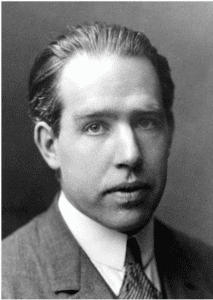
The description of this experiment could take a number of forms depending upon the specific interpretation of quantum mechanics. I will describe it in the terms of the original interpretation of quantum mechanics, the Copenhagen Interpretation.
Double Slit Experiment per the Copenhagen Interpretation
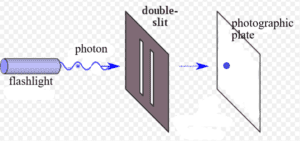
Getting back to the Double Slit Experiment, the laser shoots a photon that exposes the photographic plate in one spot and makes a dark dot. Once the photon hits the plate, we know the position of the photon—it’s a certain distance from each edge of the plate. So, we have detected it and, specifically, we have detected its position. Quantum physicists would say that we have “measured” its position.
This might seem just like measuring anything in our everyday world—for example, measuring the position of a bacterium. A biologist uses a microscope to detect the position of a living bacterium in a living human cell on a slide. She measures the distance of the bacterium from each edge of the cell. Here’s the difference: prior to the biologist measuring the position of the bacterium, the bacterium was happily swimming about the cell. After the measurement, same thing: happily swimming bacterium.
What was the photon doing before the measurement, before it hit the photographic plate? The Copenhagen Interpretation is inscrutable on this point. Here, in essence, is what it says: Prior to hitting the plate, the photon was in all possible positions in the photographic plate and maybe elsewhere as well. This condition of being in many possible positions is called a “superposition.” A superposition is a state in which we never observe a physical object. Have you ever seen an object occupy many positions at the same time? Neither have I. Nevertheless, prior to measurement, physicists say that the photon is in every possible position that the laser could have shot it to.
The condition of being in a superposition is also called a “quantum state.” It is the condition in which the weird behavior of quantum mechanics occurs.
Superpositions are mathematical rather than physical.
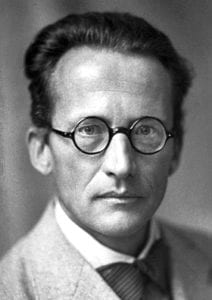
If you understand the wave function, you will understand why measurement is such a key but odd aspect of quantum mechanics. In the explanation of the wave function, you won’t have to deal with complicated quantum mechanical equations. But it will take patience and a number of steps.
Wave Function Explained
The word “function” in “wave function” simply means a particular type of equation. If you’ve studied algebra, functions are old hat. For example, here is the function y = 2x. We say that y is a function of x.
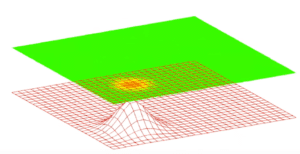
In the accompanying drawing, the red grid is supposed to be the graph ofa wave function—notice that it includes a hump, that is, a three-dimensional wave. The green film represents the photographic plate. The orange dot is the position where the particle has been detected on the photographic plate. The green film is supposed to be showing a photon landing as a dot, not as a blob with the rest smeared out around it—as might be suggested by the shape of the wave in the red grid. While the wave function (red grid) describes a wave, that’s not what the photographic plate detects.
In the Double Slit Experiment and other quantum experiments, physicists find that the entirety of the particle is measured in a single position as a dot. We have no math that gets us from the wave function to the specific position that is detected in any particular run of the experiment. In any particular run, when the single photon shoots from the laser, the specific position in which it’s detected appears to be random. Nor does anything in the wave function suggest what might trigger the change from wave to dot.
Contrast this situation with calculations done in classical Newtonian physics about the behavior of everyday objects. For example, we could calculate whether a ball thrown against a window would bounce off it or would break it. We would need to know the mass, speed, and direction of the ball. We would also need to know the force required to break the glass. With these numbers, we could calculate where on the glass the ball would hit, the force it would exert, and, thus, whether the glass would break. No mystery.
In quantum mechanics, we don’t know of a calculation that describes the shift from wave to particle nor how to calculate where the particle will land. In fact, some interpretations of quantum mechanics (as described below in the section on the De Broglie-Bohm Interpretation) maintain that no such shift from wave to particle occurs. The puzzlement and debate regarding the shift from wave to particle is called the “Measurement Problem.”
The wave function describes collective runs of the experiment.
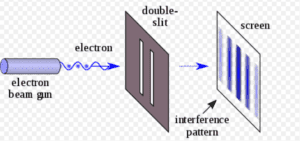
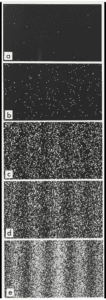
This striped pattern is highly recognizable to physicists. It’s called an “interference pattern.” It’s the signature pattern of two waves meeting. For example, physicists see it when two water waves meet or two sound waves meet. Particles don’t create this pattern; only waves do.
The Interference Pattern
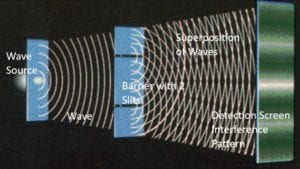

Returning to the drawing of the red grid and green film, the shape of the red-grid-wave reflects probabilities as to where the quantum particle might be detected. The wave is highest where the probabilities of detection are highest; the wave is lowest where the probabilities of detection are lowest. The wave function tells us about the probabilities of particle detection which, in turn, determines the shape of the interference pattern. The maximum exposures of the photographic plate (the darkest stripes) will occur where the photons have the highest probability of hitting the photographic plate.
Measurement and the Collapse of the Wave Function
Prior to detection, the photons appear to be waves: they form an interference pattern as waves do. But upon detection, the photons land as dots on the photographic plate, as a particle would. Some people describe this as traveling as a wave but landing as a particle. This is the famous quantum particle-wave duality. Measurement (detection on the photographic plate) is said to cause the “collapse of the wave function,” that is, the collapse from wave to particle.
What kind of wave is described by the wave function?
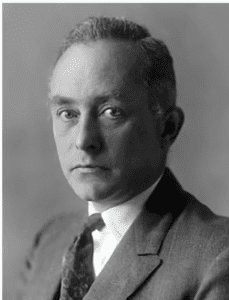
The first stab made at understanding this wave was by the physicist who first related the wave function to the probabilities of particle detection, Max Born. In 1926, Born published the mathematical formulation of his discovery that the wave function calculates the probabilities of where particles will be detected, the “Born Rule.” This discovery was awarded a Nobel Prize in 1954.
Born said that the wave function is a “probability wave” and wrote:
“I personally like to regard a probability wave as a real thing, certainly as more than a tool for mathematical calculations. … how could we rely on probability predictions if we do not refer to something real and objective? (Max Born on Quantum Theory)”
In this view, the wave function, a math equation, is granted physical reality in the form of a wave of probability. But probability, of course, is also a mathematical concept and has no physical reality. This is a puzzling aspect of the Copenhagen Interpretation and is part of the “Measurement Problem.”
Bohmian Interpretation of the Wave Function
In the 1950’s, an alternative to the Copenhagen Interpretation, the De Broglie-Bohm Interpretation, was developed by the physicist, David Bohm. He built on
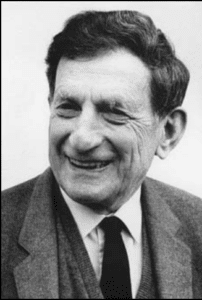
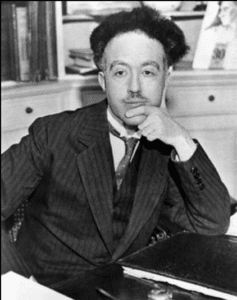
This explanation so appeals to common sense, that you might wonder why it isn’t universally accepted as the true interpretation of the Double Slit Experiment. However, the De Broglie-Bohm Interpretation has never been terribly popular among physicists. This is, at least in part, because the wave function describes a wave that really doesn’t fit well into the physical universe.
Apparent non-physical properties of the wave function:
- The wave function can include the imaginary number i, that is the square root of negative 1. But no number multiplied by itself equals negative 1. So, what physical thing could can be described by the square root of negative 1? As Dr. Ruth E. Kastner writes, “Anything observable in the world of appearance must be described by real numbers [not imaginary numbers]….”
- We know of no medium in which the guiding wave is traveling. A wave is nothing more than a vibration. What is vibrating? Some people say that quantum waves are unique in that they don’t require a medium. But these words only paper over this logical problem.
- If an interaction of two or more particles is being described, the wave function includes more than three spatial dimensions. As current understanding of the physical universe includes only three spatial dimensions, the wave, as described, doesn’t seem to fit into physical reality.

These properties of the wave function lead to the conclusion that it is describing something other than a physical wave. David Bohm proposed that the guiding wave is, in fact, not part of ordinary physical reality. He called it a “quantum potential.” He described it as a new force of nature and added an equation for it to the generally-accepted equations of quantum mechanics.
Many physicists don’t buy that a wave that isn’t part of physical reality could guide particles that they see land on their photographic plates. Others reject the guiding wave on the basis of Ockham’s Razor: quantum mechanics works fine without the equation which describes the guiding wave. For about a century, physicists have been able to accurately predict the results of experiments and to develop computer technologies with the quantum mechanical equations of the Copenhagen Interpretation. Why add another force of nature and its equation?
Interpretations of Quantum Mechanics and the Measurement Problem
Physicists agree on the workability of current quantum physics equations for predicting the behavior of quantum particles in experiments. However, they have developed over 10 interpretations of the physical meaning of these equations. These interpretations mostly differ in their explanations of wave-particle duality and the role of measurement.
The puzzling nature of what is actually happening when a quantum particle is measured is called the “Measurement Problem.” The Measurement Problem has two parts: 1) What triggers the wave to collapse down to a particle, what is the exact mechanism of collapse, and how can it be described mathematically? 2) What causes the particle to select a particular property, such as a particular position, rather than another from among the possible positions in the superposition? It should be noted that these statements of the Measurement Problem are phrased in the terms of the Copenhagen Interpretation. Several interpretations, like the De Broglie-Bohmian, maintain that measurement does not cause wave function collapse and that there is actually no such thing as wave function collapse.
Heisenberg Uncertainty Principle
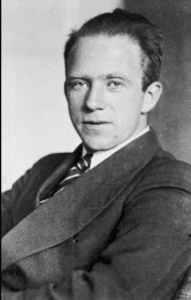
Summary
Measurement is the interface between the quantum world and the everyday world of tables and chairs. It is the point at which quantum wave-like behavior surfaces into our everyday world by creating a dot on a detection screen. The puzzles raised by measurement reflect differences between the laws that govern quantum particles and those that govern macroscopic objects like tables and chairs. The various interpretations of quantum mechanics, such as the Copenhagen Interpretation, the De Broglie-Bohm Interpretation, and the Many World Interpretation, provide different explanations for how the quantum world works and how it relates to the macroscopic world that we live in.
